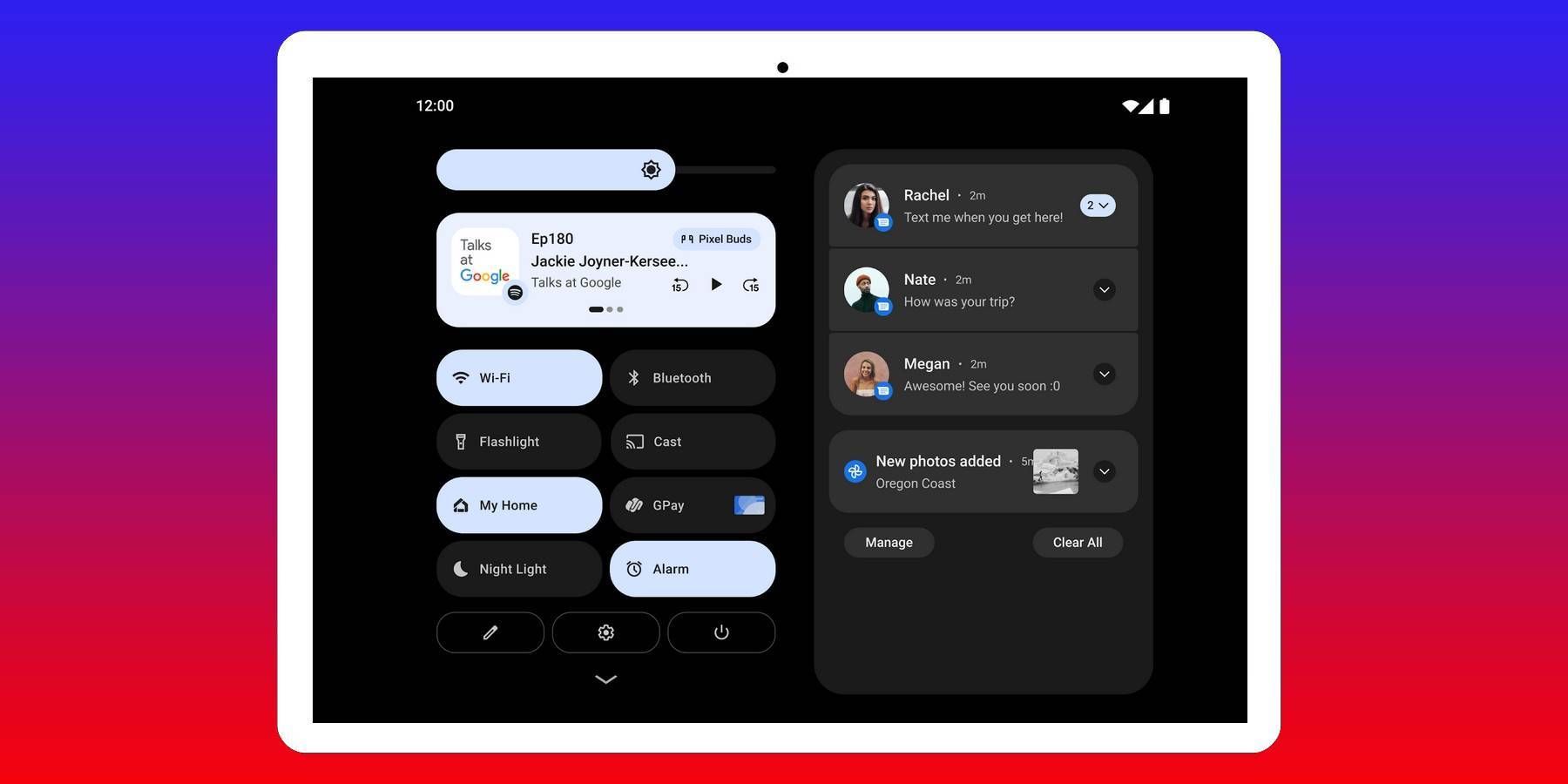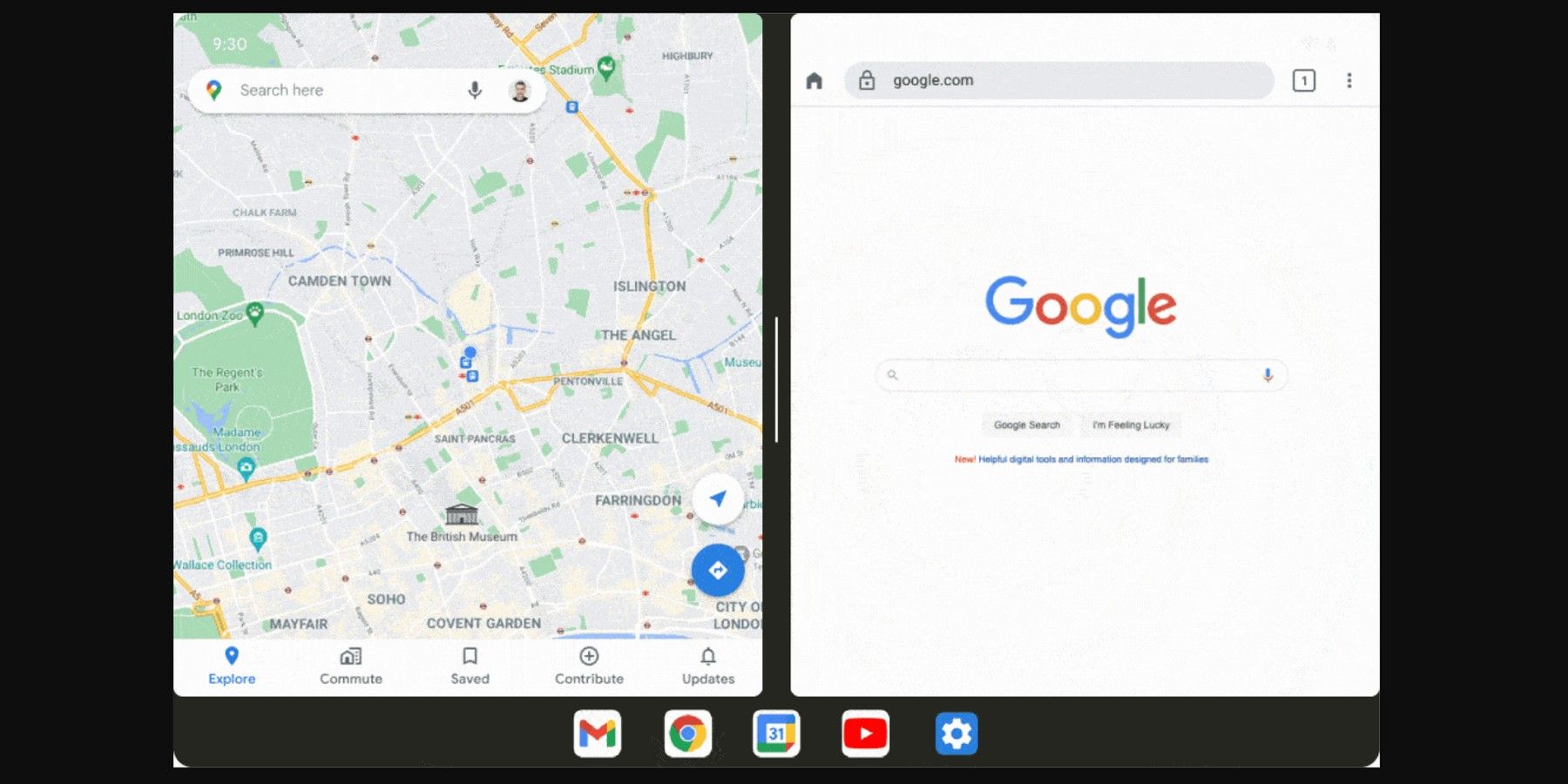Targeting foldable phones and tablets, Android 12L is a feature update that optimizes a lot of UI experiences to take advantage of the larger screen real estate for scenarios like split-screen multi-tasking or scaling up apps. When it comes to large-screen devices, Android lags behind what Apple has managed to achieve with its iPadOS, previously offering an experience that looks more like a super-sized version of the smartphone UI.
The market for Android tablets has been quite stagnant, with barely anyone other than Samsung willing to make high-end tablets that can compete with the likes of the iPad Air and Pro. With diminishing market interest, Google also reduced the pace of developing experiences tailored for tablets. However, the arrival of foldables — which blend the experience of a phone and tablet on a single device — might finally serve as the catalyst to make Android more large-screen friendly.
Google’s first solid step on the way to that goal is Android 12L, a feature update that aims to improve the software experience for foldable devices and tablets. To start, Android 12L will separate the notification shade and quick settings panel, and will show them to the right and left sides of the screen respectively. The new two-column layout gives users more control over on-screen content and actually looks quite neat. Moving over to the lock screen, the PIN or pattern lock controls will now be shifted to the side for easier reach. Google is also tweaking the home screen app grid so that the transition from a small cover display to the larger inner foldable display feels more seamless.
Google Finally Focusing On Larger Devices
Another long-overdue update comes to the split-screen multitasking experience. Android 12L adds a taskbar at the bottom to quickly access apps, somewhat like the dock in iPadOS. More importantly, launching the split-screen view is now a lot easier as users only have to drag an app’s icon and drop it anywhere on the screen. A long-press will hide or reveal the taskbar, while the app switching part is handled by a new swipe gesture. The best part is that all apps will work in split view, whether they have been configured to do so or not by developers. Apps in which a larger screen area can be used to show more information will also benefit from Android 12L. For example, the Messages app will look as intended on a phone or cover display of a foldable. When switching to a larger screen, one half of the screen will show the full list of chats, while the right side will open the conversation page of a selected chat.
Google has also paid special attention to the app scalability problems for large screens, especially those that are supposed to be viewed in portrait mode on phones, such as TikTok or Instagram. To achieve this, Android 12L uses a new UI letterboxing format that allows developers to maintain a fixed size and orientation for their apps without ruining the experience on large screens. For apps that run into aspect ratio issues, they will be shown (as intended on mobile screens) with letterboxing in a center-aligned view and a matte black medium filling the rest of the screen. With Android 12L, Google is also making a few changes to the Play Store so that users can easily find apps that provide the best experience on large-screen devices. Apps that have been optimized for foldable phones and tablets will be highlighted and, starting next year, a separate rating chart for such apps will also be published on the Play Store. Android 12L is now available as a preview for developers and will be released as a feature drop early next year.
Source: Android Developers


